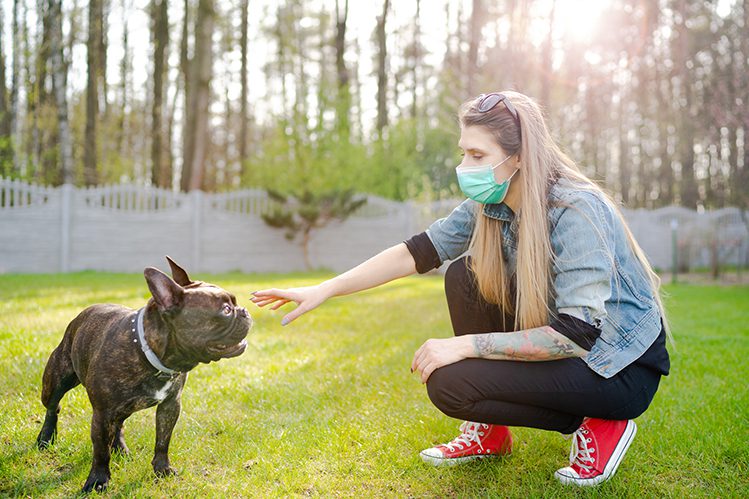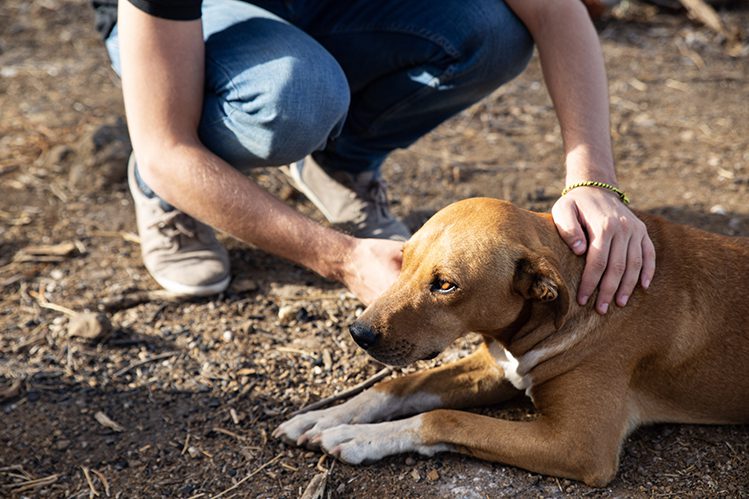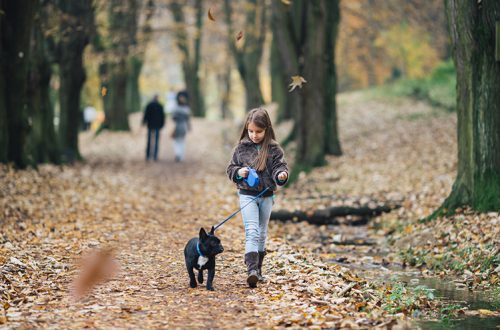
How to take care of a dog from a shelter?
Caring for any pet is a big responsibility, because the health and well-being of your ward depends only on you. The decision to adopt a dog from a shelter is exceptionally noble. But many dog owners are not quite ready for the difficulties associated with adapting a dog to a new home. The history of pets in the shelter is rarely happy, and traumatic experiences leave an imprint on their behavior.
The opinion that pets from a shelter always have health problems has little to do with reality. If you are adopting a dog from a good shelter, the handler is fully aware of its condition and passes all the information on to you. Usually pets already have all the necessary vaccinations, they are treated for parasites and possibly sterilized.
It is extremely important to consciously approach the choice of a pet, because returning to a shelter can be a collapse of all hopes and faith in people for a dog who believes in his salvation.
Consider in advance what kind of pet you need. Do you want to adopt a puppy or an adult dog? An adult pet is most often already trained in the rules of life in the house, but the puppy adapts more easily to new conditions and a new environment. Remember that puppies can be taken to a new home only at the age of two and a half or three months, not earlier.
Consider what temperament your pet should have. If you are phlegmatic and like to sit at home with a book, take a closer look at calm, sedate dogs. If you cannot imagine your life without a morning run, your choice is an energetic dog. Consider breed characteristics. Representatives of hunting dog breeds are unlikely to be happy with the role of home sofa buns.
Most dogs in shelters are mongrel dogs. But they have huge advantages: very strong immunity and unique appearance.
The most important thing is to get along with the dog in character. It is necessary to visit the shelter regularly, communicate with dogs, play together. Believe me, you will quickly understand which dog is “your”. By the time you start planning the dog’s move to a new home, you should already make friends, she should recognize you, enjoy the new meeting. Establishing contact and trust are key components of a relationship with a future four-legged family friend.

Keep in mind that caring for a dog requires significant resources. Are you ready to make changes to your daily routine? Are you ready to provide your pet with home comfort, proper diet, timely examinations by a veterinarian, training courses, regular walks? If you are a beginner dog breeder, a breed that requires a lot of experience in dog care is not for you.
Are you ready for the dog’s adaptation period after the shelter? The first days of a dog in a new home and even the first months can be a serious test for the nerves. It is not uncommon for shelter dogs to find it difficult to trust their new owners because the previous owners mistreated them. This will require all your patience and calmness.
How to make moving a dog to a new home from a shelter less stressful? Arrange a visit ahead of time. Let the dog be led to the future owner by a shelter volunteer or other acquaintance, but generally a neutral person, a guide. It is better to meet the future pet in the yard, walk a little together and go to show the dog the house.
This technique is very useful if you already have a dog that is best introduced to a new playmate in advance. When you are expecting a new pet, meet him in the park near the house with the dog that already lives with you. Do not push new acquaintances head-on, it will be easier for them to get to know each other if they walk along the path together parallel to each other, sniffing.
Show your former pet that now he will have to reckon with the presence of another family member, but this will not make you love him less. First give a treat to a new pet, then treat an old friend. Do this several times. Gradually, your old pet will understand that if you treated a new acquaintance, then immediately give a treat to him too, that is, do not deprive him of attention. Then go home together. Keep your dogs on leashes so you can show your new pet around the house consistently. Give your new and old friend a treat again to reinforce the feeling that there is no competition between them, you will pay attention to both. Often, at the end of such an introductory meeting with a new home, the pet from the shelter is no longer nervous, but calmly settles down somewhere to lie down.
What is the difficulty of adapting a dog after a shelter? Having experienced significant stress and a change of scenery, a pet cannot get used to a new home, a new environment for a long time, is a hooligan, and is afraid to be alone. The behavior of the dog stabilizes at the end of the first year of life with new owners.

In the first days of the dog in a new home, he will be either apathetic or hyperactive, may refuse food. It is better not to touch the dog once again and give it time to settle down in a new place. After a couple of weeks, attachment to the new owner appears. There is nothing good about the dog following you everywhere, but if he does not stick to you tightly, but simply prefers to be in the same room with the owner, everything is in order.
Do not leave the dog alone at home for the first time, usually in such cases, surprises in the form of a home defeat are not long in coming. After a couple of weeks, start leaving your dog alone little by little. First, leave the apartment for five minutes, then increase this time. If in these few minutes the dog has not misbehaved, praise the pet and treat it with treats. Slowly increase the time you are away. Soon the day will come when you can go away on business for a long time and not worry about how your ward is doing.
The dog, after appearing in a large family, quickly allocates its owner, but gradually begins to find a common language with the rest of the family only after three months. Let’s say again that shelter dogs often have a negative experience of communicating with people, so in the first months after the appearance of a new four-legged friend in the family, you may need the help of a cynologist and zoopsychologist. It is important not to ignore problems in the behavior and emotional state of the pet, but to try to find a way out with the help of specialists.
Find out what and how your new pet was fed at the shelter. Even if this meal plan seems inappropriate for you, stick to it for the first 10 days of your new friend’s stay with you. A sharp change in diet has not yet benefited anyone, and making changes in feeding against the backdrop of total changes in life will become even more stressful for the pet. After ten days, you can gradually start switching to the food recommended by your veterinarian.
It happens that inexperienced dog breeders, for the first time faced with the fact that the dog they adopted from the shelter, ransacked the apartment or closed in on itself and does not want to make contact, give up. They even think about whether to return the pet to the shelter, if they got excited. But a dog is not a toy, since you have adopted it into the family, you must not give in to difficulties, but overcome them together. It is possible that all problems can be solved in just a few sessions with a zoopsychologist. Don’t give up, you will definitely succeed!
From the first day of life in a new home, the dog should have everything you need – dental care products, grooming tools, beds, toys, food and water bowls. Give your ward a token-address to always find your true friend if he gets lost. Take care of these important elements of comfort and coziness in advance.
Try to protect your new dog from unnecessary stress. Repairs can be done in a year, noisy relatives can come for a week some other time, rearrangement in the house can also be postponed.
Teach your dog independent games, let it have more interesting puzzles, toys for getting the treats hidden inside. The more exciting activities a pet has, the less sad and mischievous it is in your absence.

Adopting a dog from a shelter is half the battle. Making friends with her and making it clear that she is now a full-fledged member of the family is an act with a capital letter. Be patient, and you will certainly succeed in making your new four-legged friend happy. The pet will feel your care and kindness and will answer you with devotion and friendship for many years.





